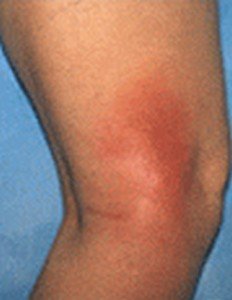Seroma Definition
Seroma is known as the accumulation of serum in specific body parts after a person undergoes surgery. The serum can be defined as the clear or yellowish fluid found inside the seroma; it is made up of plasma as well as other cells that come from various blood vessels which become damaged while the surgery is ongoing. It is characterized as a small/ big lump depending on the amount of fluid encased in it.
This is a condition which is unavoidable because all types of incisions done to the body can result to even the smallest amount of seroma during the healing process. In some cases, the serum produced becomes too much, thus, occupying more space which can mean more swelling.
Seroma Causes
The causes of the occurrence of seroma are countless especially so because there are many different operation types that can be done to the human body, but the most common include the following:
- Partial-Breast Radiation Therapy: this is a method undergone by patients who are going for breast cancer treatment. In the radiation therapy, the machine that emits a specific UV wavelength and strength is positioned directly to the part of the breast affected by the disease. Due to the concentrated amount of UV light, the skin within the vicinity has a 99% probability to burn which is a common side effect of the radiation therapy, the burn leads to the occurrence of a seroma.
- Ceasarian Section in women: this surgery is the alternative to giving birth if not done via the normal spontaneous delivery (NSD) method. In ceasarian section, the peritoneal cavity is opened in order to allow room for the baby to be brought out. But before ending up at the peritoneum, other layers are sliced including the skin, adipose tissue (fatty tissue), and the muscle. The intrusion itself can already lead to the possible occurrence of mild to severe case of seroma. The severe existence can sometimes be due to the improper stitching of the body layers which were opened during the surgical procedure and also due to the damage that the blood vessels and other tissues incurred.
- Mastectomy: this is an operation which involves the removal of a breast both in men and in women. This is again related to breast cancer because the surgery is done in order to remove the malignant tumor and the breast area itself to prevent to possible spread of the cancerous cells to other parts of the body especially in the internal organs which include the liver and the heart. Mastectomy is most likely to lead to seroma during the recuperating period because of the break that happens to the skin and especially to the blood vessels surrounding the surgical site. Seroma is actually already a common occurrence after a patient undergoes mastectomy.
- All types of reconstructive surgery especially those done to the face: these surgical procedures are prone to leading to the formation of a seroma because of the amount of nodes and blood vessels which are located on the face. Furthermore, the face consists of sensitive tissues that easily swell if an unwanted external stimulus is introduced.
Seroma Symptoms
Seroma can elicit many signs and symptoms no matter where is occurs because its causes all boils down to the existence of body trauma. The most common symptom that you will detect in a person with seroma is the presence of inflammation or swelling on the areas where the intrusion happened. As mentioned earlier, this is due to the presence of a serous fluid under the skin. Although it is normal for majority of the surgical procedures to cause an inflammation, it is vital that you observe the skin area involved because sometimes a seroma is mistaken for a hematoma or internal bleeding which can lead to other complications if not prevented.
Seroma Pictures
Picture 1 : Seroma
Image source : medscape.com
Picture 2 : Seroma under the skin on the inner knee
Image source : liposuction.com
Seroma Formation and Drainage
Seroma is formed because of the accumulation of blood plasma and other cells including those which are highly reactive to the body’s inflammatory process, under the skin’s surface. If the seroma becomes too large, the incision and drainage or simply drainage has to be performed by a surgeon. In incision and drainage (I and D), a small incision is done and then a rubber drain will be inserted in order to facilitate drainage. On the other hand, drainage is performed with the use of a specialized syringe wherein the needle is introduced in the seroma and the drained by pulling the plunger.
Seroma Treatment
Treatment for seroma is uncommon because it is not a cause for medical alarm since doctors already expect it to occur after any surgical procedure involving a break in the skin. Usually, the seroma is left to heal on its own as the body reabsorbs the fluid the fills the cavity. But in some instances wherein the size becomes bigger than the normal, drainage is performed to decrease the pressure that is being introduced to the skin.


